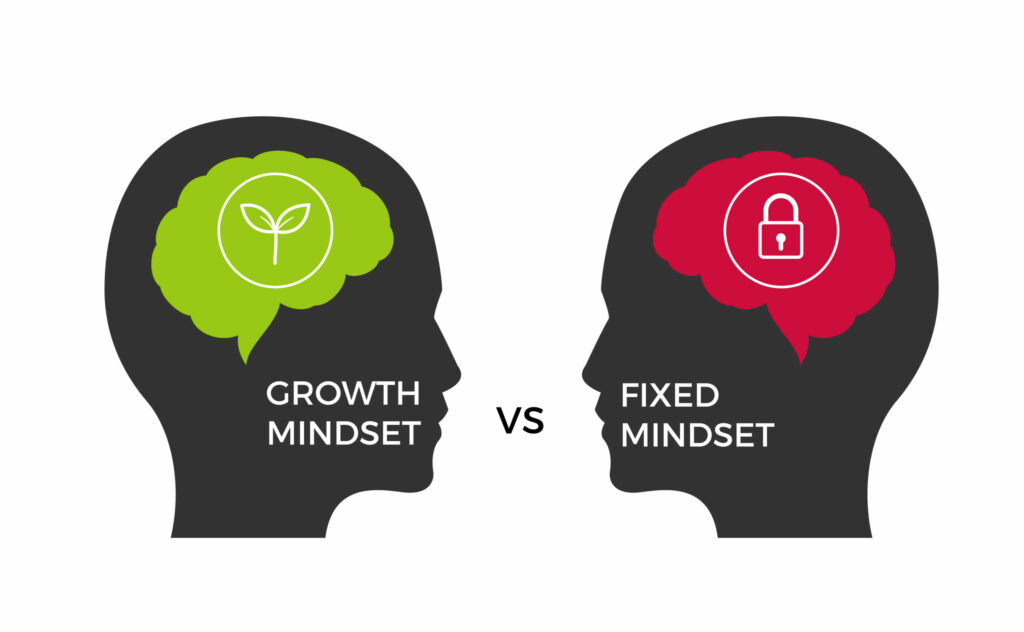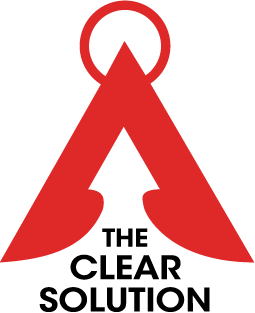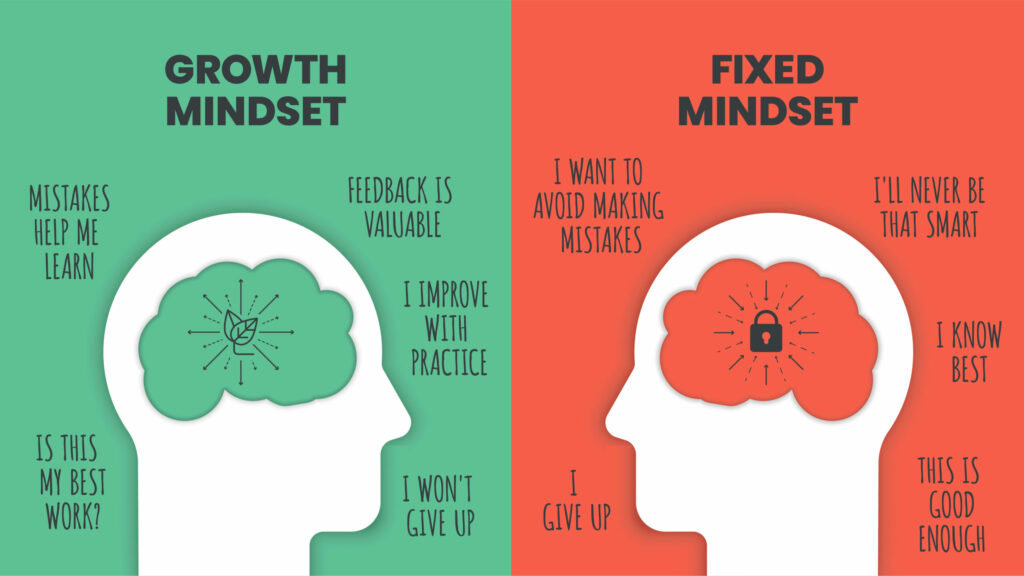Are your negative experiences holding you back?
Are you feeling stuck? It can feel frustrating, scary, and even overwhelming when we feel stuck in life. We may feel like we’re not making any progress, no matter how hard we try. Whether it’s our career, relationship, or personal well-being, feeling stuck can hold us back from achieving our goals.
You’re not alone!
It’s easy to get caught up in negative experiences and let them hold us back. Oftentimes, we aren’t even aware that these negative experiences are also creating negative, or limiting beliefs that can make us feel like we’re reliving the same pain or frustration over and over again, or that we’re stuck in a rut that we can’t escape from. It can hold us back from our ability to gain confidence, develop new skills, or even limit our desire for more control over our daily lives. But it’s important to remember that these experiences don’t have to define us. We can learn from them and use them as motivation to keep moving forward.
The first step, is to discover and acknowledge your limiting beliefs, and how these beliefs may be contributing to a “fixed mindset” that is holding you back, causing you to waste time, and even propagating more negative experience, thus keeping you in a vicious circle with no clear path to getting you unstuck.
Identifying your limiting beliefs is a mindfulness practice that is a prerequisite for your self improvement and improved mental health. Once we know what road blocks we have created for ourselves, we can then figure out a way to bust through them, find a better solution, and get our lives back on track.

What is a limiting belief?
Limiting beliefs are a fixed belief that limits your potential or keeps you stuck in a certain situation. It’s usually stems from a painful experience or negative feedback, or something that you’ve been told or that you’ve told yourself; and it stops you from achieving your goals. For example, someone with a limiting belief might believe that they’re not good at math, which would limit their ability to succeed in math-based courses. Someone with a growth mindset (we’ll dive into this soon), on the other hand, would see math as a challenge to be overcome, and would be more likely to achieve benefit in those courses.
There are a number of common limiting beliefs that we tell ourselves:
- “I’m not good enough”
- “I can’t do it”
- “I’m not smart enough”
- “I don’t have what it takes”
- “It’s too hard”
- “It’s not worth it”
- “Others can do it, but I can’t”
- “I’m not going to get that new job”
And these often stem from our fears:
- Fear of success
- Fear of failure
- Fear of rejection
- Fear of being called a fraud
- Fear of not being loved
- Fear that we are not good enough
An example: A “Rocky” start

Successful people are a great source of inspiration and perspective, especially on the topic of limiting beliefs. Oftentimes, what makes a person successful is not the good times, but the times of struggle and uncertainty. One of my favorite stories of overcoming adversity and knocking down self limiting beliefs is the early story of Sylvester Stallone. When he first sat down to write the script for “Rocky,” his intent was to be the star. Actually it wasn’t just an intent, it was a requirement. But although there was huge demand for the script in Hollywood, the studios insisted (at first) that they needed a big name to be the lead actor. The bidding went up to $265,000 for the script, and although “Sly” only had $106 to his name at the time, he turned it down.
Why did he turn it down? Perhaps partly because of his ability to overcome limiting beliefs.
It’s not a far stretch for us to speculate on the thoughts, emotions, and fears this decision may have caused. The fears and doubts associated with such a grand life decision must have felt overwhelming at the time. But growth minded people choose to bet on themselves, and not let their limiting beliefs define them.
If you’re struggling to achieve your goals, or if you feel like you’re stuck in a rut, it’s worth taking a close look at your own limiting beliefs and test drive a way to overcome them. With a little effort, determination, and self awareness, you can start to move forward and reach the progress you’re striving for in your life.
How do I identify limiting beliefs?
Do you have a particular belief that keeps you were you are, keeps you safe, but keeps you stuck, all at the same time?
Identifying your limiting beliefs can be the most empowering exercise for self improvement and discovery. What exactly is in your brain that is holding you back? What past negative experiences or feedback have you encountered that is still shaping your decision making today? It’s time to dive into your own brain activity and find out what is shaping these negative beliefs and propagating a fixed mindset.
Evaluate these questions for yourself to identify your limiting beliefs:
- What areas of your life do you feel stuck in?
- What goals do you have that you haven’t been able to achieve?
- What skills do you want to learn but feel like you can’t?
These areas can give you clues about which false beliefs are holding you back.
Another way to identify your fixed mindset beliefs is to think about how you react to setbacks and criticism:
- Do you see them as a personal attack or an opportunity to learn?
- Do you give up easily or do you persevere?
Your reaction to setbacks can be a good indicator of which erroneous beliefs are impacting your life.
Finally, you can also ask yourself what fixed mindset messages you’ve internalized from your family, friends, or society.
These messages might be about intelligence, accomplishment, or worthiness. For example, you might believe that you’re not smart enough to be successful or that you have to be perfect to be worthy of love. Identifying these fixed mindset messages can help you understand how they’re affecting your life and what you need to do to change them.
An exercise: The Fill-In-The-Blank Method
One way to identify your limiting beliefs is to use the “fill in the blank” method. This involves thinking about a situation in which you felt limited or stuck, and then completing the following sentence:
“I can’t _____ because _____.”
For example, “I can’t get promoted because I’m not good enough.”
Or, “I can’t make enough money because I don’t have the right skills.”
Once you’ve identified your beliefs, you can start to challenge them. Ask yourself if there is any evidence that disproves your belief. For example, in the case of “I can’t get promoted because I’m not good enough,” you might think about all the times you have been successful in the past. This can help you to see that your belief is not necessarily true.
It’s not uncommon for us to have many limiting beliefs, so don’t get overwhelmed. The goal to identifying your self limiting beliefs is to stay focused, stay realistic, and focus on one at a time. This will be a learning process, but in the end will promote mindfulness, encourage positive thinking, and promote positive affirmations and opportunities for yourself in your life.

How do I overcome limiting beliefs?
Our beliefs can play a major role in dictating our actions and overall success in life. And while it’s important to have faith in ourselves and our abilities, there can be such a thing as too much self-belief – especially when it comes in the form of a fixed mindset.
A fixed mindset is when we believe that our skills and abilities are fixed traits that cannot be changed. We may think that we’re either born with a certain level of talent or we’re not, and there’s nothing we can do to improve. This can lead us to feel discouraged in the face of challenges, as we may feel like we don’t have the ability to overcome them.
On the other hand, a growth mindset (again, more on this later) is the belief that our abilities can be developed over time through effort and practice. This allows us to approach challenges with a sense of optimism and confidence and can elevate our learning process, knowing that we have the ability to improve and grow.
Once you’ve identified your limiting beliefs, it’s time to start challenging them:
- Why do you believe these things?
- Are they really true?
- What would happen if you let go of these beliefs?
- What is the alternative of these beliefs?
Asking yourself these questions can help you start to see your fixed mindset beliefs for what they are: just thoughts that are holding you back from reaching your potential.

More about the Fixed Mindset
A fixed mindset means that your abilities and intelligence are fixed traits that cannot be changed. This way of thinking can limit your potential and keep you from reaching your goals. It can have a similar effect as being physically constrained, unable to move but knowing that freedom is out there…and waiting.
Our past experiences and even our daily lives can have a heavy influence on the constraints we create for ourselves. These constraints may prevent us from pursuing that new and higher paying job, or pursuing new connections, or even achieving a level of self esteem that we know to be worthy of. It can keep us in a negative state and prevent us from becoming the best version of ourselves.
Some examples:
- “I don’t have enough time to learn that new skill”
- “That’s not in my wheel-house”
- “My boss will never give me that promotion”
- “I can’t lose weight”
- “No”
What is a Growth Mindset?
This brings Jim Carrey’s movie “Yes Man” to mind. If you haven’t seen it, it’s about a man who says “no” to everything, and as a result, limits the opportunities in his life. He’s stuck, and he doesn’t even know it. But later on, he is forced to become a “yes man”, and this is when things really begin opening up and changing for him.
Having a growth mindset doesn’t mean you need to say ‘yes’ to everything however, but if you at least consider “yes,” it can be a great first step in identifying your limiting beliefs and therefore a more positive self improvement mindset.
With a growth mindset, it is possible to start seeing these beliefs as mere challenges that can be overcome. By recognizing that our beliefs are not fixed, we can start to question them and explore different possibilities. With time and practice, it becomes easier to break free of our limiting beliefs and start growing in our personal and professional lives, and even start focusing more on the important things.

What are some benefits of having a growth mindset?
Some benefits of having a growth mindset include being more open to new experiences, being more willing to learn, and being able to overcome challenges. Introduce more curiosity into your life, and you will be surprised at what will come from it. Ultimately, having a growth mindset can help you achieve your goals and reach your full potential.
Once you start nurturing your growth mindset, you will find yourself more open to new ideas, having more self awareness, and having positive thinking influence every decision that you make in your daily life. It’s a glorious thing!
How can I start nurturing a growth mindset?
The first step is to be aware of your self limiting beliefs, and once you have done this, you can then inventory your fixed and growth mindsets. Once you’re aware of the differences, you can start to make small changes in your thinking and behavior that will lead to a growth mindset. It takes time and practice, but eventually it becomes second nature.
How positive thinking can yield a growth mindset
Positive thinking is a mental and emotional attitude that focuses on the bright side of life and expects good results. A person with a positive outlook sees the glass as half-full rather than half-empty. This simple shift in thinking can make a big difference in your life.
When you have a positive attitude, you:
- Believe that good things will happen to you.
- Expect the best in every situation.
- Believe your ideas are good ones.
- Focus on your strengths, not your weaknesses.
- Are resilient in the face of setbacks.
- See failure as an opportunity to learn and grow.
All of these things can lead to greater success and happiness in life, and are the core of a growth mindset. So if you feel that you do not default to positive affirmations, it’s never too late to start. Just remember, it takes practice. The more you identify and focus on the good, the easier it will become.

Growth Mindset vs. Fixed Mindset
When it comes to achieving success in life, it’s important to have the right mindset. People with a fixed mindset believe that their abilities and talents are fixed traits that can’t be changed. They see failure as a sign of personal inadequacy and avoid taking risks because they’re afraid of looking foolish. On the other hand, people with a growth mindset believe that their abilities and talents can be developed over time through effort, good teaching, and practice. They see failure as a learning opportunity and are more likely to take risks because they believe it’s essential for growth.
So which mindset is more likely to lead to success?
The answer is both! Having a fixed mindset can lead to success if you have natural talent or you’re in a field where experience and practice aren’t as important. However, if you’re in a field where effort and learning are essential, then a growth mindset is more likely to lead to success.
Can I have both a growth and fixed mindset?
Having both growth and fixed mindsets is normal, but it’s also important to take inventory of which is which. In order to do this, it’s important to understand the difference between a fixed mindset and a limiting belief. Some fixed mindsets are obviously legitimate, as is our belief that humans can not fly unassisted. But if you have a dream of becoming an airline pilot, but feel that you are not smart enough, or don’t have the time or enough money to learn, well…that’s a limiting belief. So take inventory of which of your beliefs are legitimate, and rightly fixed, and which others are influenced by your limiting beliefs and may be holding you back or keeping you stuck.

How do I develop a Growth Mindset?
The good news is that you can develop a growth mindset by changing the way you think about your abilities and talents. You can also cultivate a growth mindset by learning from your failures and taking risks. So if you’re feeling stuck in your fixed mindset, remember that it’s never too late to change your mindset and start achieving success.
Here are a few things you can do to develop a growth mindset:
- Challenge your fixed mindset beliefs. Why do you believe these things? Are they really true? What would happen if you let go of these beliefs?
- Work on identifying your limiting beliefs. Take inventory of yourself, and explore why you think (or don’t think) certain ways.
- Seek out learning opportunities. Whether it’s taking a class or reading a book, make sure you’re constantly expanding your knowledge. Explore your ideas.
- Take risks. It’s essential to step outside your comfort zone if you want to grow. So don’t be afraid to take risks and embrace new challenges. You don’t always have to say ‘yes,’ but you should always consider it.
- Learn from your failures. Failure is an essential part of growth. So instead of seeing it as a personal setback, view it as a learning opportunity.
A Plan For Building a Growth Mindset
We understand that although the recommendations in the previous section may be helpful, they may also be a little too abstract. So we’ve put together three steps to help you inventory your limiting beliefs, identifying your fixed beliefs, and start nurturing a growth mindset:
Step 1: Set yourself up for a ‘Breakthrough’
Before we can start making productive and efficient changes in our lives, we need to get our mind right. In simplistic terms, having a growth mindset means being willing to pursue a ‘breakthrough’ from our comfort zone…
Have you ever taken an extraordinary risk? Perhaps you have gone skydiving, tried an exotic food, did a ropes course, or walked on fire? And then after, do you remember how you felt? Uncertainty, discomfort, and even fear had been replaced by empowerment and excitement. That was you breaking through your comfort zone.
To set yourself up for a breakthrough, and position yourself to develop a growth mindset, first see yourself living in a new or different thought that excites you. Visualize yourself in this new space. It is then when that new or different thought becomes who you are.

Step 2: Identify your ‘Ways of Being’
Many people believe if you ‘have’ something (time, money, etc.), you can finally ‘do’ something. And then this will allow you to ‘be’ something (happy, peaceful, content, etc.). But what if we reversed engineered this, and started with ‘being’ first?
‘Havingness’ does not produce ‘beingness.’ When you are ‘being’ at your core, and then ‘do’ something, the ‘have’ is very easy to attain.
So, how do you ‘be?’
Pick 3 words that best describe and support you in becoming the new you, and then write them down:
I am a(n) ______________, _______________, and ________________ person.
Example: I am an open, courageous, and giving person.
Write this down for yourself and revisit it (and say to yourself) every day. This check in will ensure that you stay in alignment with your ‘Ways of Being,’ and will position yourself to being open to the next step.
Step 3: Take Inventory
Before we can start making productive changes in our lives, we need a baseline. A documented assessment of where we stand today, so we know where and how to move forward.
To make this easy, we have created and are offering for free our Balance Baseline assessment: a proprietary, interactive assessment inviting you to explore 6 key areas of your life: personal growth, mindfulness, community, relationships, professional growth, and financial enhancement.
This is your starting point for identifying where you are, and where you would like to go. By completing this complimentary assessment, you will receive a free customized report (with scoring and findings) that will provide you with that crucial baseline for developing a growth mindset and optimal personal growth. We hope you take advantage of this amazing resource:
Make today your best day ever
If you’re feeling stuck, your goal should be to get unstuck. And the path to achieve this is via mindfulness, looking deeper into your beliefs and the actions they create, and challenging yourself. If you’ve gotten this far, you have already started your journey. We invite you to move ahead with your personal growth, confidently.



